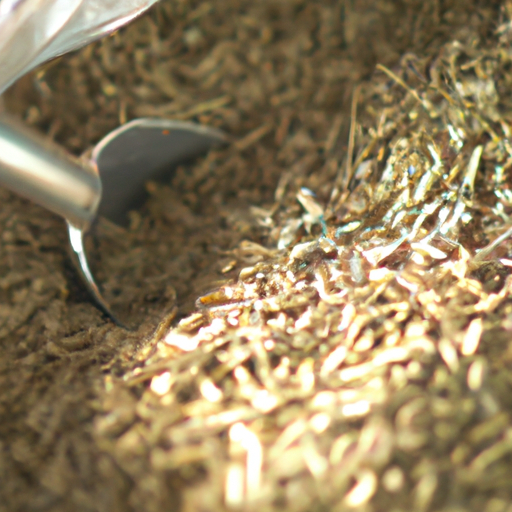-
Table of Contents
- Introduction
- What to Consider When Storing NPK 20 20 20 Fertilizer
- The Pros and Cons of Using NPK 20 20 20 Fertilizer
- How to Maximize the Effectiveness of NPK 20 20 20 Fertilizer
- Tips for Applying NPK 20 20 20 Fertilizer to Your Garden
- Understanding the Benefits of NPK 20 20 20 Fertilizer for Your Plants
- How to Choose the Right NPK 20 20 20 Fertilizer for Your Garden
- Conclusion
“Grow Bigger, Better Crops with NPK 20 20 20 Fertilizer!”
Introduction
NPK 20 20 20 fertilizer is a great way to give your plants the nutrients they need to grow and thrive. Preparing this fertilizer is relatively simple and can be done in a few easy steps. This guide will provide you with the information you need to properly prepare NPK 20 20 20 fertilizer for your plants.
What to Consider When Storing NPK 20 20 20 Fertilizer

When storing NPK 20 20 20 fertilizer, it is important to consider several factors to ensure the product remains safe and effective.
First, the fertilizer should be stored in a cool, dry place away from direct sunlight. Exposure to extreme temperatures or moisture can cause the fertilizer to break down and become less effective.
Second, the fertilizer should be stored in a sealed or packaged container to prevent contamination from other materials. It is also important to keep the container away from combustible materials, as the fertilizer is highly flammable.
Third, the fertilizer should be stored away from children and pets. Ingesting the fertilizer can be dangerous and cause serious health problems.
Finally, it is important to check the expiration date on the fertilizer before using it. If the expiration date has passed, the fertilizer should be disposed of properly.
By following these guidelines, you can ensure that your NPK 20 20 20 fertilizer is stored safely and remains effective.
The Pros and Cons of Using NPK 20 20 20 Fertilizer
NPK 20 20 20 fertilizer is a popular choice for many gardeners and farmers due to its balanced nutrient content. It is a complete fertilizer, meaning it contains all three major nutrients: nitrogen (N), phosphorus (P), and potassium (K). While this type of fertilizer can be beneficial for plants, it is important to understand the pros and cons of using it.
Pros
The primary benefit of using NPK 20 20 20 fertilizer is that it provides a balanced nutrient content. This means that plants will receive the right amount of nitrogen, phosphorus, and potassium for optimal growth. Additionally, this type of fertilizer is easy to use and can be applied quickly. It is also relatively inexpensive compared to other types of fertilizers.
Cons
One of the drawbacks of using NPK 20 20 20 fertilizer is that it can be difficult to control the amount of nutrients that are released into the soil. This can lead to over-fertilization, which can damage plants and the environment. Additionally, this type of fertilizer does not provide any additional micronutrients, such as iron, zinc, and magnesium, which are essential for plant health. Finally, NPK 20 20 20 fertilizer can be washed away by heavy rains, meaning it needs to be reapplied more often.
In conclusion, NPK 20 20 20 fertilizer can be a beneficial choice for gardeners and farmers due to its balanced nutrient content. However, it is important to understand the pros and cons of using this type of fertilizer before making a decision.
How to Maximize the Effectiveness of NPK 20 20 20 Fertilizer
NPK 20 20 20 fertilizer is a popular choice for gardeners and farmers alike, as it provides a balanced blend of nitrogen, phosphorus, and potassium. To maximize the effectiveness of this fertilizer, it is important to understand how to properly apply it.
First, it is important to determine the amount of fertilizer needed for the area being treated. This can be done by measuring the area and then calculating the amount of fertilizer needed based on the manufacturer’s instructions. It is important to apply the correct amount of fertilizer, as too much can cause damage to plants and soil.
Once the correct amount of fertilizer has been determined, it is important to apply it evenly. This can be done by using a spreader or by hand. If applying by hand, it is important to spread the fertilizer in a circular motion, making sure to cover the entire area.
It is also important to water the area after applying the fertilizer. This will help the fertilizer to be absorbed into the soil and will also help to prevent runoff.
Finally, it is important to monitor the area for signs of over-fertilization. If the plants appear to be wilting or the leaves are turning yellow, it is likely that too much fertilizer has been applied. In this case, it is important to reduce the amount of fertilizer being applied or to stop applying it altogether.
By following these steps, gardeners and farmers can maximize the effectiveness of NPK 20 20 20 fertilizer and ensure that their plants are receiving the nutrients they need.
Tips for Applying NPK 20 20 20 Fertilizer to Your Garden
1. Choose the right time to apply the fertilizer. NPK 20 20 20 fertilizer should be applied in the spring or early summer when the soil is warm and moist. Avoid applying the fertilizer during periods of drought or when the soil is frozen.
2. Prepare the soil. Before applying the fertilizer, make sure the soil is properly prepared. Loosen the soil with a spade or tiller and remove any weeds or debris.
3. Calculate the amount of fertilizer needed. The amount of fertilizer needed will depend on the size of your garden and the type of plants you are growing. Refer to the instructions on the fertilizer package for the recommended amount.
4. Apply the fertilizer. Spread the fertilizer evenly over the garden bed and lightly rake it into the soil. Avoid applying the fertilizer too close to the base of the plants.
5. Water the garden. After applying the fertilizer, water the garden thoroughly to help the fertilizer reach the roots of the plants.
6. Monitor the plants. Monitor the plants for signs of over-fertilization, such as yellowing leaves or stunted growth. If you notice any of these signs, reduce the amount of fertilizer you are applying.
Understanding the Benefits of NPK 20 20 20 Fertilizer for Your Plants
NPK 20 20 20 fertilizer is a popular choice for gardeners and farmers alike, as it provides a balanced blend of essential nutrients for optimal plant growth. This type of fertilizer contains equal amounts of nitrogen, phosphorus, and potassium, which are the three primary macronutrients that plants need to thrive.
Nitrogen is essential for the production of chlorophyll, which is responsible for the green color of plants and helps them to absorb energy from the sun. It also helps to promote healthy leaf growth and encourages the production of proteins and enzymes.
Phosphorus is important for the development of strong roots and stems, as well as for the production of flowers and fruits. It also helps to increase the efficiency of photosynthesis and encourages the development of healthy root systems.
Potassium helps to regulate the water balance in plants and is essential for the production of proteins and enzymes. It also helps to promote strong cell walls and encourages the development of healthy flowers and fruits.
NPK 20 20 20 fertilizer is a great choice for gardeners and farmers who want to ensure that their plants are receiving the right balance of nutrients. It is especially beneficial for plants that are grown in soil that is low in nutrients, as it can help to replenish the soil and provide the necessary nutrients for healthy growth.
In addition to providing essential nutrients, NPK 20 20 20 fertilizer also helps to improve the soil structure and encourages beneficial microbial activity. This helps to improve the soil’s ability to retain moisture and nutrients, which can help to reduce the need for frequent watering and fertilizing.
Overall, NPK 20 20 20 fertilizer is an excellent choice for gardeners and farmers who want to ensure that their plants are receiving the right balance of essential nutrients. It can help to promote healthy growth and development, as well as improve the soil structure and encourage beneficial microbial activity.
How to Choose the Right NPK 20 20 20 Fertilizer for Your Garden
When it comes to fertilizing your garden, choosing the right NPK 20 20 20 fertilizer is essential for ensuring your plants get the nutrients they need to thrive. NPK stands for nitrogen, phosphorus, and potassium, and the numbers indicate the percentage of each nutrient in the fertilizer.
When selecting an NPK 20 20 20 fertilizer, it is important to consider the type of plants you are growing. Different plants have different nutrient requirements, so it is important to choose a fertilizer that is tailored to the specific needs of your plants. For example, if you are growing vegetables, you may want to choose a fertilizer that is higher in nitrogen, as this will help promote leafy growth. On the other hand, if you are growing flowers, you may want to choose a fertilizer that is higher in phosphorus, as this will help promote blooming.
It is also important to consider the soil type in your garden. Different soil types require different fertilizers, so it is important to choose a fertilizer that is compatible with your soil type. For example, if you have sandy soil, you may want to choose a fertilizer that is higher in potassium, as this will help promote root growth.
Finally, it is important to consider the application rate of the fertilizer. Different fertilizers have different application rates, so it is important to read the instructions on the package to ensure you are applying the correct amount. Applying too much fertilizer can damage your plants, so it is important to follow the instructions carefully.
By taking the time to consider the type of plants you are growing, the soil type in your garden, and the application rate of the fertilizer, you can ensure you are choosing the right NPK 20 20 20 fertilizer for your garden. With the right fertilizer, you can ensure your plants get the nutrients they need to thrive.
Conclusion
In conclusion, preparing NPK 20 20 20 fertilizer requires careful attention to detail and a thorough understanding of the fertilizer’s components. It is important to mix the fertilizer components in the correct proportions and to ensure that the fertilizer is evenly distributed. Additionally, it is important to store the fertilizer in a cool, dry place and to use it within a reasonable amount of time. Following these steps will help ensure that the NPK 20 20 20 fertilizer is effective and safe for use.

